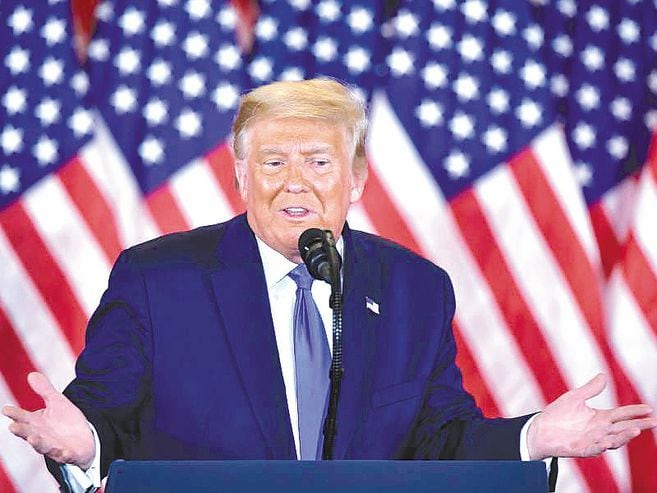
Trump’s signing comes after two federal programs, including unemployment benefits, ended Saturday night, leaving 12 million Americans exposed to the severe economic crisis.
President Donald Trump on Sunday signed the economic emergency plan that will bring in $ 900,000 million, a package considered essential to straighten the course of the first world economy, which was badly hit by the coronavirus pandemic. The decision was a sudden change for the president, who for days refused to sign this bill that was passed by Congress on Dec. 21.
Trump signed the $ 2.3 billion bill on Sunday afternoon at his home in Mar-a-Lago, Florida. That package, known as the omnibus, includes the second stimulus plan approved in the US this year and $ 1.4 trillion to fund the government through September 2021.
“I sign this omnibus and covid-19 package with a resounding message that makes it clear to Congress that wasteful points of the law must be cut,” Trump said in a statement. The president assured that even though he is signing the bill, he still hopes Congress will pass an amendment to the point that is considering sending a one-time payment of $ 600 to millions of taxpayers to offset the devastation of the pandemic.
Trump also assured that he will return the government’s funding plan in underlined parts to Congress to make changes, but it is not clear that lawmakers will change anything.
View more: What would happen if Donald Trump didn’t sign the financial aid package?
With all of this comes Trump’s signing after two federal programs, including unemployment benefits, expire Saturday night, exposing 12 million Americans to the severe economic crisis. Trump’s delay will lead to delays in re-administering these types of benefits to Americans.
Days ago, Michele Evermore senior policy analyst at National Employment Law explained to the New York Times that even if the president signed the bill on Saturday, states would still need time to reprogram computer systems.
View more: China is imposing tougher sanctions for capital market violations
“States cannot pay distributions until the bill is signed, which means that if the president does not sign on Saturday, distributions will not start again until the first week of January. But they will still end in mid-March, effectively reducing the extension from 11 weeks to 10 weeks, ”says an analysis in the US newspaper.
Why Trump’s indecision?
For days, the president rejected the package approved by Congress, asking, among other things, to increase direct payments to taxpayers from $ 600 to $ 2,000. Trump called the relief a “disgrace” and said the $ 600 payments included in the aid are “ridiculously low.”
What does the aid package offer?
In addition to direct payments, the rescue plan includes unemployment benefits of $ 300 per week, 325 billion in aid to businesses (including 275,000 for payroll), 45 billion for public transportation, 82 billion for schools and billions in food stamps, assistance to tenants and distribution of vaccines.
With information from Efe *